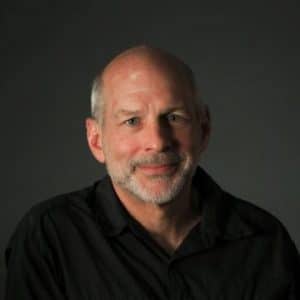A church with an addition strategy vs. a church with a multiplication strategy. The difference between the two is distinct.
Unfortunately, we have so few churches engaging in real multiplication that they’re difficult to find. Instead, we hold up churches that do addition really, really well and mistake that for multiplication. When we look at those churches that are best at addition, we see something that’s bigger, bolder and sometimes better–but not really different from other churches with an addition strategy.
What got us here…
We do have at least one way to distinguish between an addition-strategy church and one that’s experiencing radical multiplication. It’s the presence or absence of a mathematical term called an asymptote, which just means “limit” or “barrier”–the idea that in nature, each successive cycle of input effort must work even harder to produce the same output result as the previous cycle. The asymptote physically acts like a buffer or limit to suppress the output.
Take this concept to a church context. Say you’re employing a multisite strategy. The first limits you bump up against might be leadership capacity and finances. You push through those limits and successfully launch your first campus. Now you’re ready for your second and third site, but soon find that launching these sites requires even more effort than the first site. Again, you successfully push through that barrier; now you’re ready for your fourth site. But the fourth adds a whole other level of leadership and management complexity you never expected.
In other words, what got us to where we are now is not going to get us to where we need to go. With addition-growth, there will always be another barrier to confront and conquer.
But what if it didn’t have to be that way? What if your church launched a multisite campus that, in turn, developed its own leaders that birthed another site and planted churches? And what if that granddaughter site began to birth campuses that birthed campuses and planted churches? Now, you’ve got real traction and viral impact. Because your church is multiplying itself without barriers or limits (in the absence of an asymptote), radical multiplication is taking place. Pretty beautiful idea, right? Makes me think of a church 2,000 years ago that spread like wildfire.
However, I don’t think this kind of radical multiplication going forward is just an idea or a previous anomaly. I actually think we’re looking at a coming reality.
The battle for a new reality
This new reality will first need to exist in the minds and hearts of leaders. To imagine and envision a new future, leaders must fundamentally challenge the underlying assumptions in today’s common approaches to growing the church.
Making this mental paradigm shift is only the first step leading to a stream of potential changes in how we release and deploy people for ministry; how we distribute resources; and how we measure success. And no doubt, these kinds of changes will spawn multiplication tensions. Wrestling with these resulting tensions is where the battle for a new reality of radical multiplication will be won or lost.
Consider this example from a multisite scenario. In all likelihood, a multisite church would value sending and releasing over gathering and accumulating people. But how well we do at gathering and accumulating is still the primary means of church effectiveness and impact, especially among media gatekeepers. The primary distinctions of churches appearing on Top 10, Top 50 and Top 100 lists include size (attendance) and growth rate. We don’t really measure a church’s sending capacity (although in most cases, sending will ultimately yield greater Kingdom impact). This skewed scoreboard creates tensions for the leader committed to multiplication. Just ask any of the eBook authors in Exponential’s multiplication series.
In his Exponential eBook, Flow, Larry Walkemeyer focuses in on the personal walls he had to get over to become a multiplying leader. Walkemeyer points out that wrestling with these internal questions raises internal questions:
- Am I willing to give up potential notoriety?
- Do I really believe God will provide for and sustain us if we send our best leaders?
- Can I be okay with other churches seemingly growing larger than us because our growth is measured differently?
- Am I willing to share my dominion?
These questions bring to the surface our personal struggles with pride and ego, fear and unbelief, competition and comparison, and authority and control.
But when that battle is fought and won in the minds and hearts of leaders, the envisioned reality becomes a tangible one with the potential to make a real difference for the Kingdom.
I like what Exponential Director Todd Wilson says in the Exponential eBook, Spark: Igniting a Culture of Multiplication. Addressing the multisite tension, he writes:
“Facing this tension requires some soul searching and hard questions about what model of multisite you plan to implement, as well as your ultimate goal in starting a new campus. If the new campus is, in reality, simply overflow rooms that further showcase or deploy your gifts, then you’re likely acting from an addition-growth paradigm.”
He goes on to say, “However, if your church is considering a new multisite location as a means to leverage the strength of the mother church whose goals include raising up new teaching; developing new indigenous leadership; creating new vision that addresses location-specific needs; and eventually starting a site or plant itself, then your church may be bucking the norm and innovating an approach that is more characteristic of multiplication.”
If you’re leading an expanding multisite church or considering multisite for your church, think about these paradigm differences and honestly evaluate the factors shaping and driving your strategy.
Are you ready for a new reality?
Bill Couchenour serves as director of distributed resources for Exponential.







